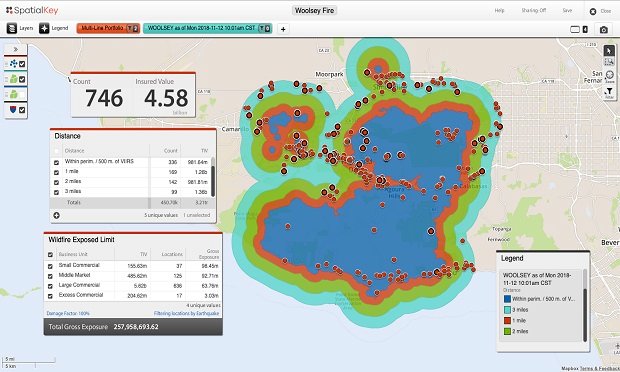While predictive modeling has been used for years inunderwriting, with ever-increasing sophistication and accuracy, ithas now moved into other areas such as marketing and claims.
|This growth stems from a combination of the wealth of datacompanies possess on their customers and the processing power nowavailable across the board; statistical routines can be dataintensive and only recently have 'mainstream' hardware and softwarebeen able to handle the workload.
|To evaluate how to utilize predictive modeling most effectively,efficiently, and with the maximum amount of flexibility, insurancecarriers need to consider the following key guidelines:
- Getting started—Utilize a narrow, focusedapproach to identify a target area, and generate the best resultsbefore broadening the approach further while also making sure thedesign is scalable to allow for quick expansion
- Availability of data—Review the availabilityof good, usable (not necessarily perfect) data, both internal andexternal to the organization, and including both historical andongoing information
- Incorporate of models—Ensure that models aredesigned and incorporated into business processes and don't simplycomprise of analysis of historical data after the fact
- Model management—Create a discipline aroundnot only the initial model development but also around the on-goingmodel maintenance
Leveraging the Models
|What can predictive models do for an insurance company? Byleveraging predictive modeling throughout the organization,insurers are able to more accurately predict and respond to eventsduring the life cycle of a customer, from the initial prospect andacquisition through the entire life of the policy. If a claimoccurs, insurers are using predictive models to more accuratelyidentify the best next action, resulting in an increase in customersatisfaction while also reducing cost. With this increased use ofpredictive modeling comes the challenge of how to deploy multiplemodels within the organization. It is important to understand thatin order to be successful, an organization must design itspredictive modeling infrastructure in such a way that it isscalable and adaptable to multiple areas within the enterprise.
|A common challenge that is always raised by those who areunfamiliar with predictive modeling is the effectiveness ofrules-based systems versus predictive models. Many organizationsuse rules to guide decisions and some feel that this is enough.While there is certainly a place for the use of business ruleswithin operational workflows, only relying on these is extremelyinefficient and difficult to manage. More often than not, rulesbecome outdated quickly and over time lose their applicability tothe current business environment. Integrating predictive modelslessens the complexity by allowing the model itself 'manage' andadjust the things that rules have historically tried to do (i.e.relationships, cause/effect,…).
|Incorporation into BusinessProcesses
|While it has been proven there is value in using predictivemodeling in underwriting to predict future performance, the truepower of predictive modeling is recognized by incorporating it intoreal-time business processes. This enables an organization to reactwith greater precision during various customer interactions, notjust after the fact.
|By integrating models within workflow, an organization is ableto exploit the computational power now in play, allowing them toreact much more effectively to changing conditions. It allows theprocess to be tailored to the circumstances of not only the currentevent but also events of the past. This is what is referred to asthe vertical meeting the horizontal; the vertical being historicalinformation and the horizontal being the current situation. This isa significant advantage over rules-based systems that generallyonly look at the current situation.
|As an example, let's take an insurance company that wants toreview its automobile physical damage repair estimates. The companywants to analyze estimates to identify potential leakage. Using'traditional' methods of reviewing these systematically, arules-based approach would have been used to check items such asframe labor hourly rate or total estimate value. These values wouldcome directly from the estimate itself or calculated from estimatedata. The rules themselves would be maintained by the company and,depending on size of the company, would have to be different fordifferent locations.
|The rules would look at characteristics of the estimate and thenprovide an output based on how the estimate scores. With apredictive model, not only is the current estimate data fed intothe model, but so is historical information. This historicalinformation allows the model to weigh input data and enables theoutput to be tailored to what has been happening in real-life. Bydoing so, not only is the model output more representative of whatis actually happening, depending on the type of model used, themodel itself, through learning, essentially maintains itself overtime.
|Another aspect of incorporating predictive models into businessprocesses is to identify the proper point in within the process toactually run data through the modeling engine. For bodily injuryclaims, it may make sense to regularly evaluate an open claimwhenever an adjuster performs an activity on the claim. Theanalysis may determine if it is the right time to settle aclaim.
|This answer may change each time an analysis is run because ofnew data being fed into the model. Because of this, it is importantthan an organization understands its business processes anddocuments them prior to incorporating predictive models into them.Once that is done, analysis can be done to determine the impact ofthe new system to the existing processes and select the bestplacement of both the invocation of the model analysis and theoutput of the model.
|Just as important as doing the as-is business process modeling,it is equally important to ensure the processes are updated toreflect where and how predictive modeling has beenincorporated.
|Getting Started
|If an organization has not yet deployed predictive modeling intothe enterprise, it is best to begin in a focused manner and targetan area that needs immediate improvement. Doing so enables theorganization to quickly confirm the value of the predictive modeland build a case for more extensive use of predictive modelingwithin the organization.
|For example, targeting claims leakage. While focusing on onearea initially is a conservative, safe approach, it is importantthat the modeling architecture be developed in such a way that thesystem is not a single-use, fit for purpose design. It needs to beagnostic and scalable so that other models can be developed, notjust one area. It also needs to be able to handle concurrent modelsand processes.
|Ideally, you would segregate the modeling 'engine' data from thebusiness data. Doing so enables you to manage multiple modelsindependently from the business data itself. By taking thislong-term approach from the onset, there is minimal reworknecessary for the system as different areas of the business and newmodels are brought into the fold.
|Focusing on one area also allows the organization to gentlyintroduce the concept of predictive modeling to the organizationitself. The use of predictive models outside of underwriting (i.e.those who use statistics day in and day out) often causes confusionand uncertainty about what exactly is “under the hood.”
|Care should be taken to educate the organization on the basicsof predictive modeling and ensure that there is adequate buy-in.System design should ensure that the output or recommendations fromthe modeling engine not be optional. Making the use of thepredictive modeling output optional may result in a reluctance touse the technology and can ultimately prevent the organization fromrealizing the true potential of the system. This is especially trueif the users feel threatened by the technology replacing theirskill.
|On the surface, it may seem simple to plug models into workflow.However, as with any new technology, there is an acceptance curvethat must be addressed. Unlike rules-based systems that are easy tounderstand as to why certain recommendations or scores wereprovided, predictive models are more complex by nature.
|As such, articulating exactly why a certain customer scores acertain way or a recommendation is made is difficult. This isbecause predictive models produce their output through complexrelationships between input data as well as derived data within themodel itself.
|Availability of Data
|It should be noted that the effectiveness of a predictive modelis directly related to the availability and quality of input data.This includes first party and third party data. It is the oldcliché – garbage in, garbage out. Depending on the type of modelused, gaps or missing data may be acceptable. Because of this, itis important to understand what is available when determining whichtype of model to use.
|It is also important to be able to have access to as much dataabout the customer and the other event participants as possible.For instance, with the example above, not only would you wantcustomer data but you would also want to incorporate information onthe person that writes the estimate, whether it be a staff member,a shop or an independent appraiser. Some of this information maynot be available internally.
|Because of that, you must source data from a third party toenable your model to better represent a true picture of actualevents and to have a more complete picture of what actuallyhappened. This will strengthen the insight provided by themodel.
|Various third party sources, such as rating bureaus and dataaggregators will be able to provide information that can enhancethe relationships within the model. This will strengthen theinsight provided by the model and provide a more complete andaccurate output.
|Model Management
|In order to have an effective predictive modeling system, youmust have a strong model to begin with and, like any system, inorder to maintain its effectiveness, it must be kept current. Witha predictive modeling system, this is very important. A key part ofthe modeling process is not only the initial model development butalso the validation of the model itself. In order to do this, anorganization must have historical information available. Thishistorical information is broken down into two parts. The firstpart is the sample data used to create the model. A modeler woulduse this data to establish the relationships and structure for themodel.
|Once the model is developed, it is validated using the secondpart of the historical data, the out-of-sample data. Typically, thesample data is the larger of the two sets and the out-of-sampledata is the smaller.
|In order to properly validate the model, not only is source datanecessary but just as important, outcome data is required. Theout-of-sample data is run through the model and the output iscompared with what actually happened. This is used to determinewhether the model predictions are accurate.
|There are many options for the design and deployment ofpredictive modeling systems, from off-the-shelf systems to bespokedevelopment. However, regardless of the route an organizationtakes, it must ensure that the right skills, specificallystatistical, are available to not only provide guidance and inputinto the original design but, just as important, to keep the systemcurrent and make sure it doesn't become stale or outdated.
|Using the same process as the initial development, after thesystem is put into production, the modeler would periodically checkthe model to check its health. As the business grows and as theenvironment within which the business operates changes, you mustensure the model still reflects the business.
|For instance, using our example again, let's assume the companydid not make use of independent appraisers when the model andsystem was developed. Once the system was in place and being used,management decided to expand operations and, as a result, decidedto use independent appraisers to service customers in hard to reachplaces. Since the model used information about appraisal sources,it is important to incorporate the new source into the model.
|Otherwise, the model no longer truly reflects the currentenvironment and its results will become less accurate. If a neuralnetwork is used, updating the model may actually be incorporatedinto the system, either supervised or unsupervised. This can beespecially useful.
|Just as important as keeping the model and system up to date iskeeping management informed on the effectiveness of the system.This is especially important in order to establish credibility forthe model and to help build support for deploying predictivemodeling to other areas.
|Conclusion
|In summary, the power of predictive modeling is more attainablethan ever. By deploying this technology into the largerorganization, insurance companies stand to gain operationalefficiencies, achieve competitive advantages by being able to reactto changing market conditions more quickly ultimately leading to anexpansion of its customer-base. While it will take an investmentinitially, the paybacks are too significant to overlook thepotential.
|Want to continue reading?
Become a Free PropertyCasualty360 Digital Reader
Your access to unlimited PropertyCasualty360 content isn’t changing.
Once you are an ALM digital member, you’ll receive:
- All PropertyCasualty360.com news coverage, best practices, and in-depth analysis.
- Educational webcasts, resources from industry leaders, and informative newsletters.
- Other award-winning websites including BenefitsPRO.com and ThinkAdvisor.com.
Already have an account? Sign In
© 2024 ALM Global, LLC, All Rights Reserved. Request academic re-use from www.copyright.com. All other uses, submit a request to [email protected]. For more information visit Asset & Logo Licensing.








